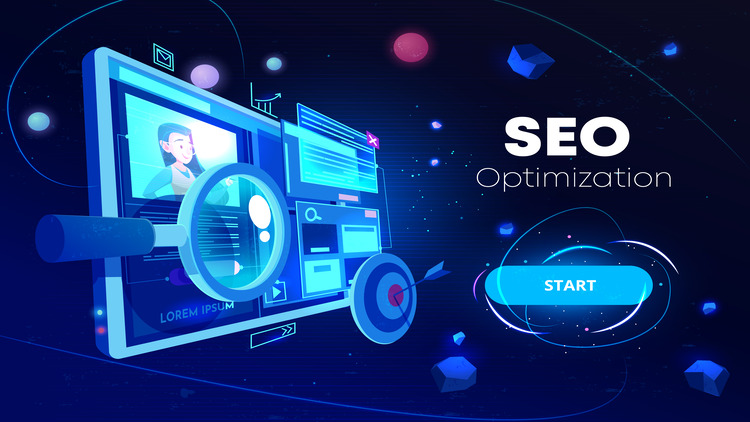February 20, 2024
Technical SEO is the backbone of your website’s visibility and performance in search engines. It involves optimizing the infrastructure of your site to enable search engines to crawl and index it more effectively. This comprehensive checklist covers essential technical SEO aspects to ensure your site adheres to search engine standards, thereby improving its ranking potential.
1. Ensure Site Is Crawlable
- Robots.txt File: This text file tells search engine bots which pages or sections of your site to crawl and which to ignore. It’s essential for preventing search engines from indexing duplicate content or private areas.
- XML Sitemap: An XML sitemap lists all important pages of your site, making it easier for search engines to find and index your content. Regularly updating your sitemap ensures new pages are discovered faster.
2. Optimize Site Structure
- Logical Hierarchy: A well-organized site structure helps users and search engines navigate your site. A clear hierarchy and simple navigation can boost your SEO by distributing page authority throughout your site.
- URL Structure: URLs should be readable and keyword-rich. Simple and descriptive URLs can improve user experience and help search engines understand your pages.
3. Implement HTTPS
- Secure Protocol: Using HTTPS encrypts data between the browser and the server, enhancing your site’s security. Google has confirmed HTTPS as a ranking signal, prioritizing secure websites in search results.
4. Improve Site Speed
- Page Load Time: Fast-loading pages improve user experience and contribute positively to your site’s ranking. Optimizing images, enabling compression, and reducing redirects are strategies to enhance site speed.
- Mobile Speed: With mobile-first indexing, your site’s mobile version must load quickly. Accelerated Mobile Pages (AMP) can also improve loading times on mobile devices.
5. Ensure Mobile-Friendliness
- Responsive Design: A responsive design ensures your site looks good and functions well on all devices, which is crucial since mobile usability is a ranking factor.
- Mobile Usability: Tools like Google’s Mobile-Friendly Test can identify mobile usability issues, helping you make necessary adjustments.
6. Optimize for Core Web Vitals
- Largest Contentful Paint (LCP): LCP measures loading performance. To improve LCP, optimize your server, route users to a nearby CDN, and cache assets.
- First Input Delay (FID): FID measures interactivity. To reduce FID, minimize JavaScript execution time.
- Cumulative Layout Shift (CLS): CLS measures visual stability. To minimize CLS, use size attributes for images and videos and ensure ad elements have a reserved space.
7. Schema Markup Implementation
- Structured Data: Adding schema markup to your HTML enhances the way your page displays in SERPs by enabling rich snippets, which can improve click-through rates.
8. Fix Duplicate Content Issues
- Canonical Tags: Canonical tags help prevent duplicate content issues by specifying the “canonical” or “preferred” version of a web page, guiding search engines on which version to index.
9. Optimize 404 Pages
- Custom 404 Pages: A user-friendly 404 page can improve the user experience by offering navigation options back to relevant sections of your site, reducing bounce rates.
10. Address Redirect Chains and Loops
- Direct Redirects: Ensuring redirects are direct and minimizing redirect chains can speed up page loading time and improve site performance.
11. Implement International SEO (If Applicable)
- Hreflang Tags: For sites serving users in multiple languages or regions, hreflang tags help search engines display the correct language or regional URL in search results.
12. Optimize Site Indexing
- NoIndex Tags: Use NoIndex tags to prevent search engines from indexing pages that shouldn’t appear in search results, like internal search results or terms and conditions pages.
13. Improve Internal Linking
- Link Equity Distribution: Effective internal linking practices help distribute link equity (ranking power) throughout your site, boosting the SEO of less prominent pages.
14. Monitor and Fix Broken Links
- Link Health: Regularly checking for and fixing broken links can prevent dead ends on your site, improving the user experience and crawl efficiency.
15. Secure Against Negative SEO
- Regular Monitoring: Keeping an eye on your backlink profile and disavowing toxic backlinks can protect your site from negative SEO attacks and penalties.
Conclusion
Technical SEO is intricate and requires ongoing attention. By systematically addressing each point on this checklist, you can significantly improve your site’s technical health, making it more attractive to search engines and users alike. Remember, technical SEO is not a one-time task but a continuous process of optimization and refinement. Keeping up with the latest search engine guidelines and technical advancements will ensure your site remains competitive and compliant, driving organic growth and enhancing your online presence.
Incorporating Abacus Desk into your SEO strategy can significantly elevate your website’s performance in search engine rankings. Recognized as one of the best SEO agencies, Abacus Desk specializes in crafting bespoke SEO solutions tailored to the unique needs of each client. Their expertise spans across all facets of SEO, including technical optimization, content strategy, and link building. With a deep understanding of the latest SEO trends and algorithms, Abacus Desk ensures that your website not only meets but exceeds search engine standards. Partnering with Abacus Desk means investing in a partnership that prioritizes your website’s visibility, driving organic traffic, and fostering growth in the digital landscape. Their commitment to innovation, combined with a results-driven approach, makes Abacus Desk the go-to agency for businesses looking to secure a competitive edge in their online presence.
